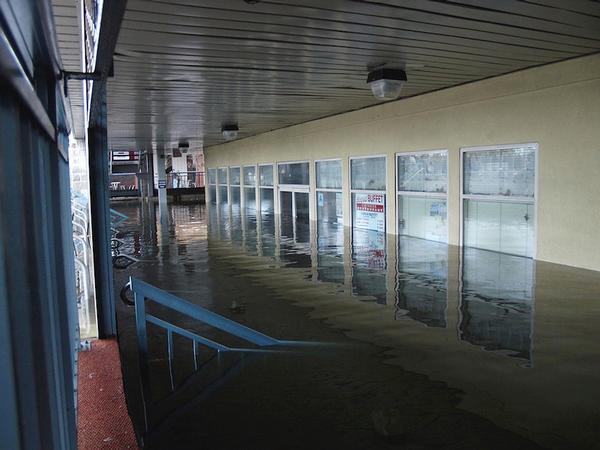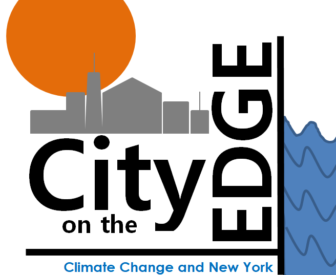
Flooding caused by Hurricane Sandy on Emmons Avenue in Brooklyn.
Environmental issues are sometimes dismissed as boutique infatuations of elites, as distractions that are distant from the bread-and-butter concerns of working-class people. Witness the screed at ShaleDirectories.com earlier this week on the real reason Mayor de Blasio, citing climate concerns, came out against the TransCo Williams natural-gas pipeline. “Right now, he needs money to launch a national campaign,” the zealous Tom Shepstone wrote. “That can only come from wealthy trust-funders who value leisure interests and moral preening above everything else.”
The signs from a unique partnership in central Queens suggest that climate change is on the minds of people with little time for leisure or preening. The Regional Plan Association and Make the Road New York teamed up to survey 400 people in the Jackson Heights, Elmhurst, and Corona neighborhoods of Queens—an area that is 58 percent Latino and where a third of the population lives within 200 percent of the federal poverty line.
The results, reported Wednesday, indicate that 70 percent of respondents were “very concerned” and 23 percent “somewhat concerned” about climate change.
As the report makes clear, there are plenty of reasons for that concern. Sea-level rise will make flooding more likely in Flushing Meadows Corona Park, the recreational heart of the borough, and increase the possibility of sewer backups and other issues with real health effects. Severe storms threaten to disrupt school and work for communities that are ill-positioned to handle missing either, and where undocumented people might be nervous about applying for disaster aid (or ineligible for it). And then there’s the overlooked threat of severe heat, which, the report said, “is the biggest climate change-related threat facing New York City in terms of mortality.”
Extreme heat can raise stress levels, worsen air pollution, and cause illnesses that require hospitalization, and even death. Extreme heat can cause a range of health issues, including heat stroke, heat exhaustion, dehydration, kidney disease. Heat-related stress can also exacerbate cardiovascular and respiratory diseases and effect cognitive ability. Heat can also trigger asthma due to higher levels of pollution or even the hot air itself.
After a series of workshops in the neighborhood, RPA and Make the Road came up with a list of actions that would make the area more resilient to the effects of higher temps, higher seas and more frequent storms.
A few can be implemented by low-income households themselves, like opening and closing windows in the summer to regulate heat, using blinds to trap heat on winter nights, fighting mold with simple cleaning practices and crafting family emergency plans.
But collective action is obviously required, including more work to create green jobs, steps to introduce more green to the urban landscape, and training for community health workers in climate-related ailments.
On a city level, the report calls for banning diesel buses. “Diesel soot contains toxins that can be inhaled into the deepest parts of the lungs and enter the bloodstreams of people who are exposed to such pollutants. This can cause many health problems, including asthma, bronchitis, cancer and premature death,” the authors write. And yet, “According to a recent Metropolitan Transportation Authority (MTA) budget proposal, 1,700 new buses are set to be purchased in the next five years. Of the 1,700 new buses, approximately 1,300 of them are diesel-fueled.”
While the city has announced bold new steps for reducing emissions to help fight climate change, there’s been less focus on local measures to adapt to impacts likely to be unavoidable. De Blasio did earlier this year announce a project to protect lower Manhattan by extending the city’s coast to create a buffer. In his Earth Day speech unveiling the Green New Deal, however, the mayor only briefly reiterated the city’s plan to spend $20 billion on measures to defend against climate change. A report by City Comptroller Scott Stringer released earlier this week says the city “had spent only 54 percent of a combined $14.7 billion in already-allocated federal grants directed towards Sandy recovery and resiliency improvements.”









